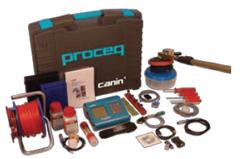Things to Consider Before Doing Concrete Compression Test
Concrete compression testing is performed to determine the compressive strength of concrete. It is probably the most performed and most widely used and known concrete testing methods . The test involves crushing a test cylinder in a compression testing machines and recording the ultimate strength at failure. AS1012.8.1 Chapter 7 gives guidance on the moulding of lab specimens. Rodding or tamping cannot be used on samples with slump less than 40mm. In those circumstances vibration must be used. Care must be taken with specimens of concrete with slump greater than 100mm to ensure segregation does not occur. The procedure for the compaction by vibration of specimens shall be as follows: (a) Fill the moulds in two approximately equal layers. (b) Vibrate each layer until the surface becomes relatively smooth in appearance. Vibration should not be prolonged beyond the point at which mortar commences to collect on the surface. (c) Place sufficient concrete in the top layer, to ov...

